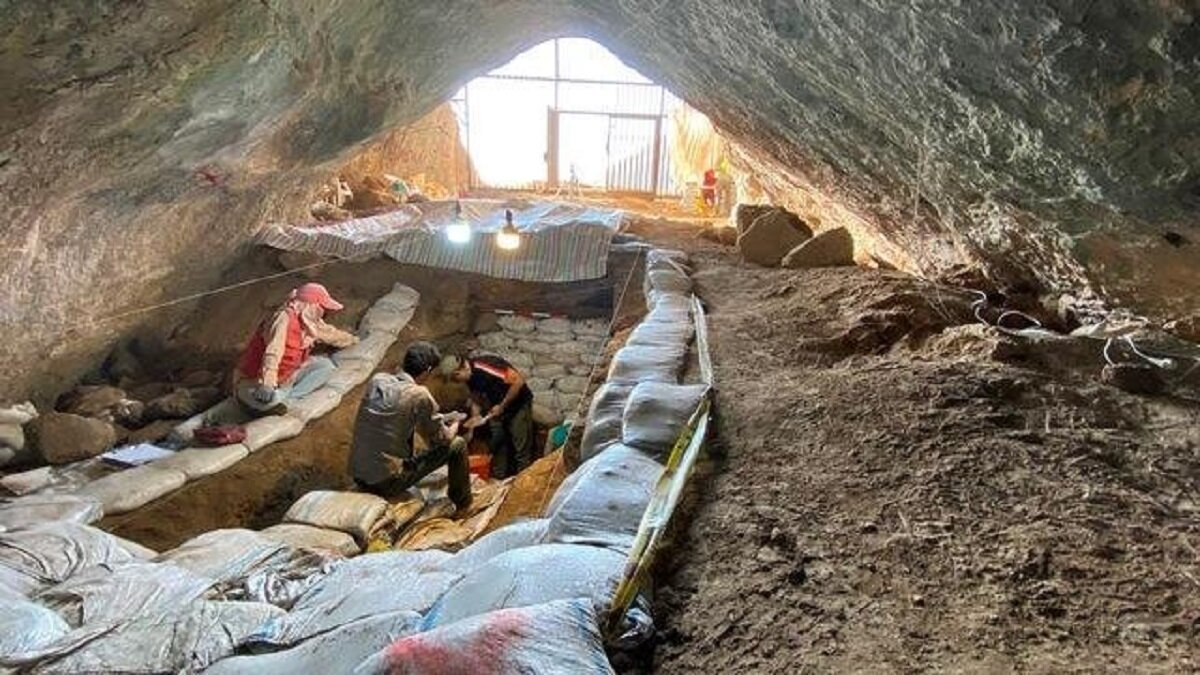Archaeologists consider new excavation at Qal-e Kord, one of Iran’s oldest known human settlements

TEHRAN – A number of local officials and university experts held a coordination meeting on Monday to plan the sixth season of archaeological excavations at Qal-e Kord Cave, marking the continuation of work at one of Iran’s oldest known human settlements located in Avaj county of Qazvin province.
The session was attended by Hamed Vahdatinasab, scientific advisor to the project and leader of previous excavation seasons, alongside Milad Hashemi, a faculty member at Tarbiat Modares University and head of the upcoming excavation team. They met with Seyyed Mehdi Hosseini, the provincial tourism chief, to discuss the start of the new excavation phase scheduled for early August.
Vahdatinasab briefed attendees on findings from the prior five excavation seasons. He noted the readiness of the excavation team to resume work aimed at uncovering further evidence of early human habitation.
Hosseini expressed the department’s support for the new season and highlighted the rich cultural heritage and tourism potential of the Avaj region. He emphasized that promoting tourism and increasing visitor engagement remain priorities for the current year.
Qal-e Kord is considered the oldest human settlement in Iran, according to preliminary archaeological results that indicate an age of more than 400,000 years based on deposits found there, according to Vahdatinasab.
“Knowing that Qal-e Kord was inhabited by Neanderthals, we are seeking to obtain a chronology of these cave dwellers. We are also looking for animal remains and the foods they consumed… As we go down, we discover older layers.”
The archaeologist said stone tools obtained from this cave indicate that it was a residence of other humans who lived before Neanderthals; species such as the Heidelberg man or possibly a type of upright man.
As mentioned by Vahdatinasab, archaeologists have so far succeeded in identifying two types of extinct prehistoric horses, deer, brown bear, and rhinoceros in animal remains in this cave.
In November 2018, the first season of the joint Iran-France archeological exploration led to the discovery of over 6,000 cultural pieces in the area. It also yielded bone remains of horses, deer, bears, and many stone tools belonging to the Middle Paleolithic period (between 200,000 and 40,000 years ago).

A 2019 study published in the Journal of Human Evolution suggests that Neanderthals were roaming at the Iranian Zagros Mountain sometime between 40 to 70 thousand years ago.
Until the late 20th century, Neanderthals were regarded as genetically, morphologically, and behaviorally distinct from living humans. However, more recent discoveries about this well-preserved fossil Eurasian population have revealed an overlap between living and archaic humans.
Neanderthals lived before and during the last ice age of the Pleistocene in some of the most unforgiving environments ever inhabited by humans. They developed a successful culture, with a complex stone tool technology, that was based on hunting, with some scavenging and local plant collection. Their survival during tens of thousands of years of the last glaciation is a remarkable testament to human adaptation.
AM
Leave a Comment